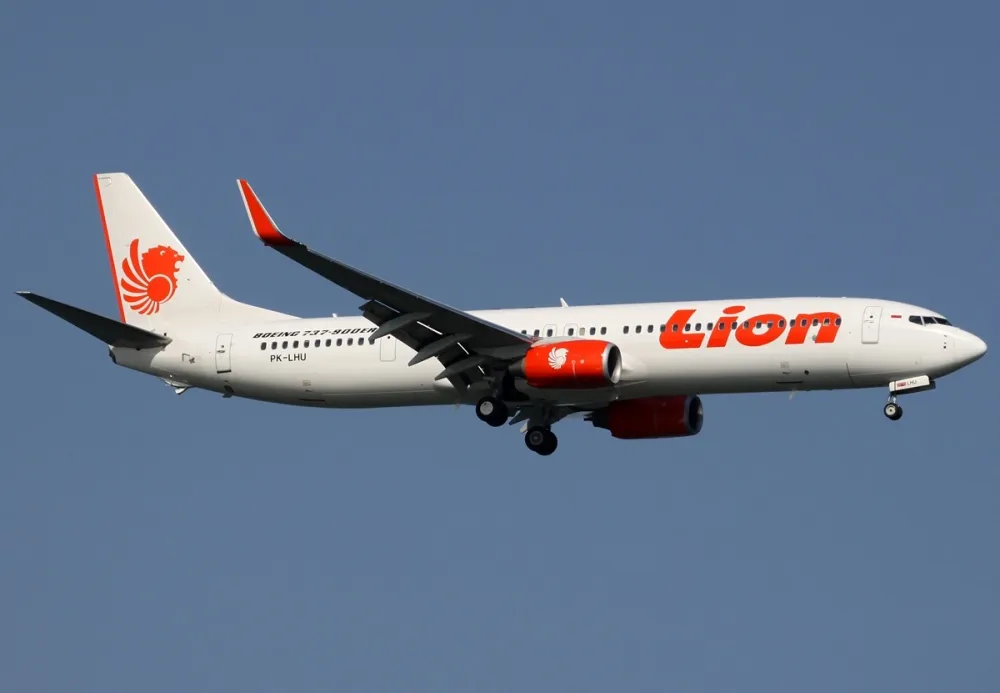
Lion Air 737 crashes with more than 180 on board
Oct 29, 2018

In October 2018, Lion Air Flight JT610, a Boeing 737 MAX 8, tragically crashed into the Java Sea shortly after taking off from Jakarta, Indonesia. The aircraft, carrying over 180 passengers and crew, lost contact with air traffic control just minutes into its flight. Investigations revealed that the crash was linked to issues with the aircraft's automated flight control system, known as MCAS, which erroneously pushed the nose of the plane down. This disaster marked a significant incident for the 737 MAX series and raised critical questions about aircraft safety, maintenance practices, and regulatory oversight in the aviation industry.
Overview of the Lion Air 737 Crash
The tragic incident involving the Lion Air 737, which occurred on October 29, 2018, shocked the aviation world. This disaster resulted in the loss of all 189 passengers and crew members on board. The flight, which was en route from Jakarta to Pangkal Pinang, went down shortly after takeoff. Investigators quickly began to analyze data from the cockpit voice recorder (CVR) and flight data recorder (FDR) to determine the cause of the accident.
Key Factors Contributing to the Crash
Several critical factors have been identified in connection to the Lion Air 737 crash. The investigation revealed issues with the aircraft's Maneuvering Characteristics Augmentation System (MCAS), which was designed to enhance the plane's handling characteristics. Unfortunately, flaws in this system played a significant role in the tragedy.
Here are some of the key factors that emerged from the investigation:
| Factor | Details |
|---|---|
| MCAS Malfunction | The MCAS system erroneously activated, causing the aircraft to nose-dive. |
| Pilot Training | Insufficient training for pilots on the new system was identified as a contributing factor. |
| Maintenance Issues | Concerns were raised about the airline's maintenance practices and adherence to safety protocols. |
The Aftermath of the Lion Air Crash
The aftermath of the Lion Air 737 crash has had a profound effect on aviation safety regulations worldwide. Following the incident, the Indonesian government and the global aviation community reassessed their safety protocols. The crash prompted a comprehensive review of the Boeing 737 MAX aircraft, leading to grounding orders and increased scrutiny of similar aircraft.
Investigators from the National Transportation Safety Committee (NTSC) of Indonesia, along with the U.S. National Transportation Safety Board (NTSB), worked diligently to uncover the truth behind the disaster. Their findings not only highlighted the technical issues with the aircraft but also pointed to systemic failures within Lion Air's operations.
Impact on Lion Air and the Aviation Industry
The Lion Air crash had immediate repercussions for the airline. Public confidence plummeted, leading to a significant drop in ticket sales and a tarnished reputation. The airline faced lawsuits from victims' families and scrutiny from regulatory bodies.
In the broader aviation industry, the incident raised questions about safety standards and regulatory oversight. Many airlines that operated the Boeing 737 MAX were forced to re-evaluate their training programs and maintenance practices. The crash also prompted discussions about the need for improved pilot training, particularly regarding new technology and systems introduced in modern aircraft.
Lessons Learned from the Lion Air 737 Crash
The Lion Air 737 crash serves as a stark reminder of the importance of safety in aviation. Key lessons learned from this tragedy include:
- Importance of Comprehensive Training: Pilots must receive thorough training on all aircraft systems, especially new technologies like MCAS.
- Regular Maintenance Checks: Airlines must adhere to stringent maintenance protocols to ensure aircraft are safe for operation.
- Transparency and Accountability: Airlines should prioritize transparency in their operations and be held accountable for safety standards.
Conclusion
The Lion Air 737 crash remains a pivotal event in the history of aviation. It serves as a crucial case study for airlines, regulators, and aviation professionals. By understanding the factors that led to this tragedy, the industry can work towards preventing similar incidents in the future.
As we reflect on this disaster, it is essential to honor the memory of those who lost their lives. The aviation community must continue to prioritize safety, ensuring that every flight is as secure as possible for passengers and crew alike.
Further Reading and Resources
For those interested in diving deeper into the details surrounding the Lion Air crash, several resources are available:
- National Transportation Safety Committee (NTSC) - Official reports and findings.
- Boeing's Official Website - Information on the 737 MAX updates and safety measures.
- International Air Transport Association (IATA) - Insights on aviation safety and regulations.
By continuing to learn from past incidents, the aviation industry can make strides toward a safer future for air travel.
Related Articles

Explore Thailand: The Best Islands to Visit for Paradise, Adventure, and Relaxation

The Ultimate Guide to the Best Islands in Thailand for Your Next Getaway

Do babies need passports? How to get a passport for a newborn

How to get a U.S. passport fast: here’s how to expedite the process

What is Mobile Passport Control: 5 reasons why you should use it

SENTRI vs. Global Entry: A detailed guide

Do you need a passport to go to the Bahamas? Let’s find out

Do you need a passport to go to Mexico? A detailed guide

Do you need a passport to go to Canada? We got the answer

Do You Need a Passport for a Cruise: An Essential Travel Guide

Booster Seat Requirements: All the Rules to Follow in Your Rental Car

What Are the World’s Most Powerful Passports, and How Does Yours Rank?

How to Take a Passport Photo at Home: A Helpful Guide

You've got to have heart! Southwest's new livery

Your opinion: Should water be free on low cost carriers?

Young women bolder than guys as solo travellers
